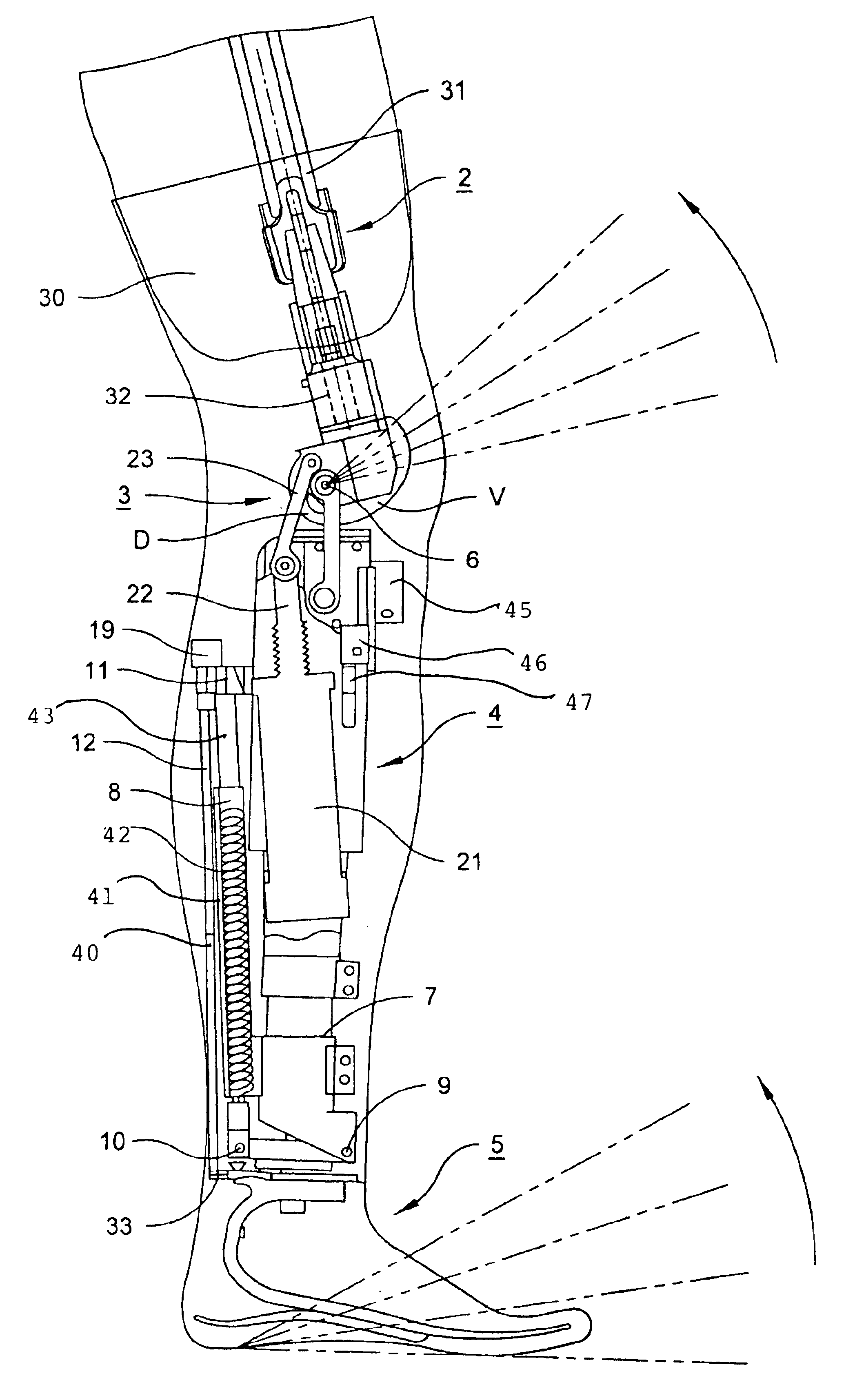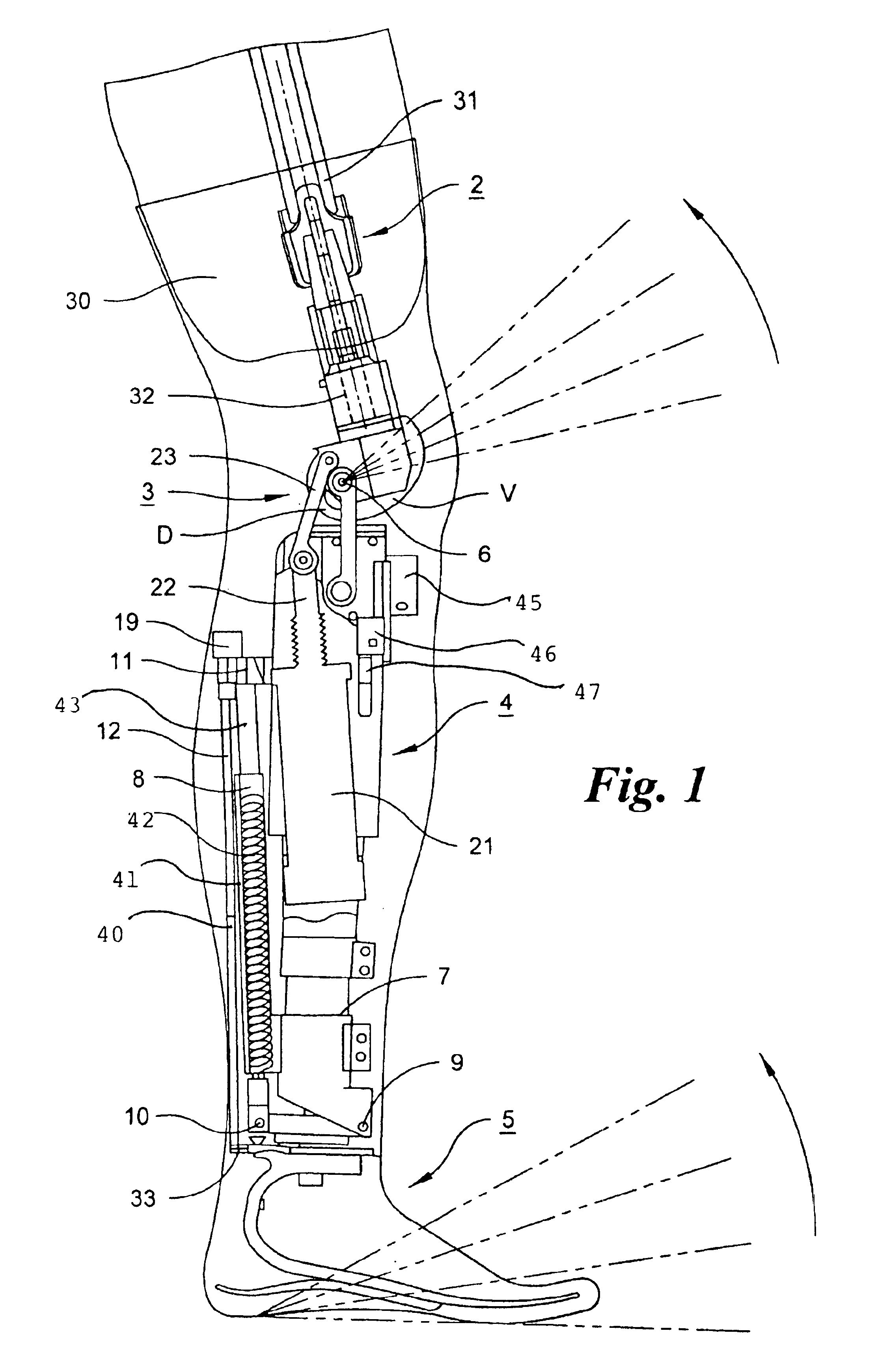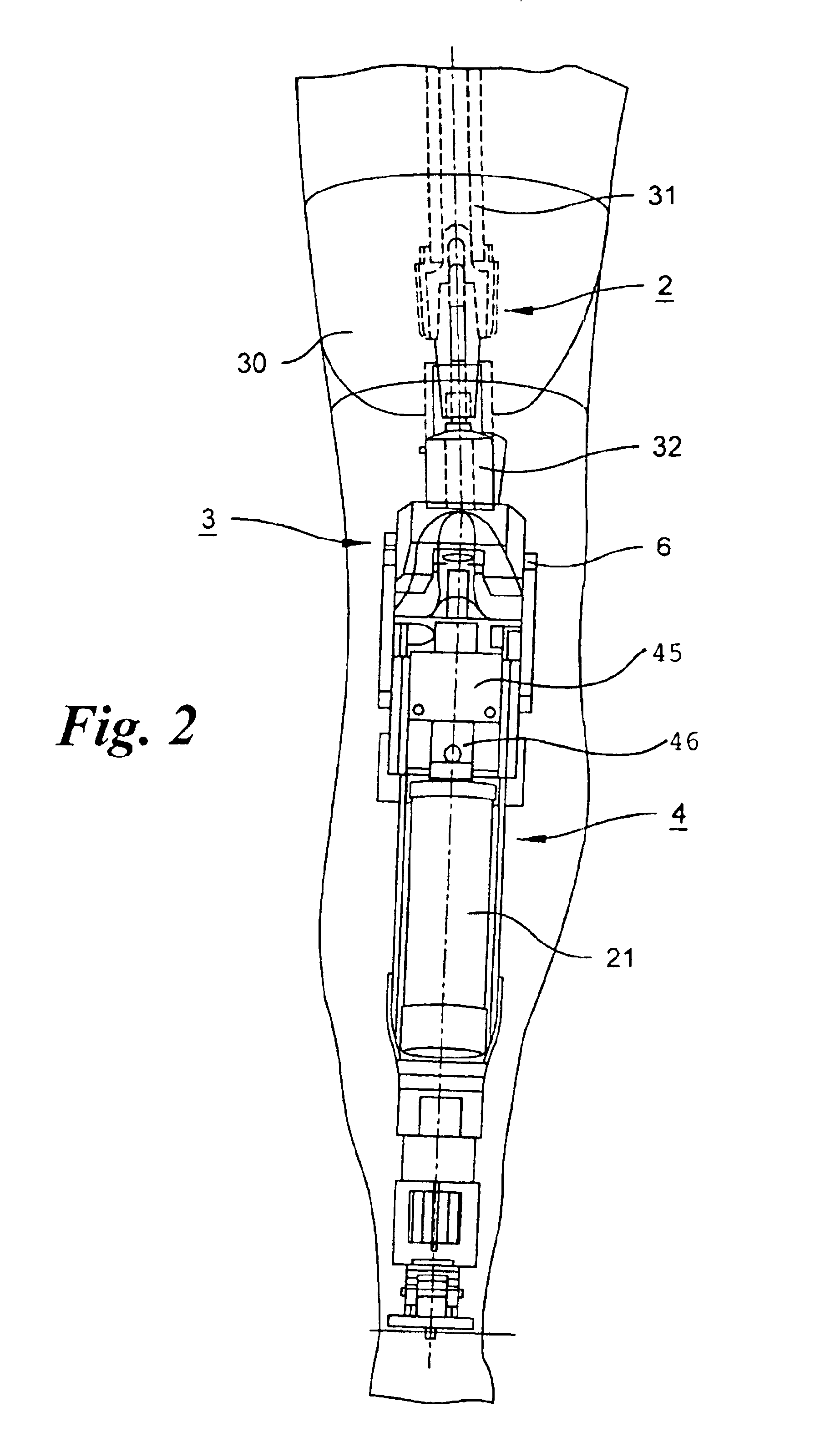Leg prosthesis
a leg and leg technology, applied in the field of leg prosthesis, can solve the problem that the generation of an unambiguous electrical signal for each bending position is impossible, and achieve the effect of improving the leg prosthesis
- Summary
- Abstract
- Description
- Claims
- Application Information
AI Technical Summary
Benefits of technology
Problems solved by technology
Method used
Image
Examples
Embodiment Construction
[0029]The leg prosthesis consists of an adapter 2, which is connected to the thigh stump 30 of the patient in such a manner that the adapter 2 is fixed to the femur stump 31. To the coupling element 32 of the adapter 2 a knee joint 3 is coupled, to which is connected on the distal end a prosthetic lower leg 4, which finally carries a prosthetic foot 5, in such a manner that the prosthetic foot 5 is pivotably connected to the prosthetic lower leg 4.
[0030]The knee joint 3 has a pivot axis 6, about which the upper-leg part of the knee joint 3 can pivot relative to the lower-leg part 4. The knee joint 3 has the special property that it executes a rolling-sliding movement about the pivot axis 6 during the transition from the extended position to the bending position. This leads to the fact that the distance of a point D in front of the pivot axis 6, when viewed dorsally, to the end 7 of the prosthetic lower leg 4 steadily decreases. Correspondingly, the mentioned distance for a point V i...
PUM
 Login to View More
Login to View More Abstract
Description
Claims
Application Information
 Login to View More
Login to View More - R&D
- Intellectual Property
- Life Sciences
- Materials
- Tech Scout
- Unparalleled Data Quality
- Higher Quality Content
- 60% Fewer Hallucinations
Browse by: Latest US Patents, China's latest patents, Technical Efficacy Thesaurus, Application Domain, Technology Topic, Popular Technical Reports.
© 2025 PatSnap. All rights reserved.Legal|Privacy policy|Modern Slavery Act Transparency Statement|Sitemap|About US| Contact US: help@patsnap.com



